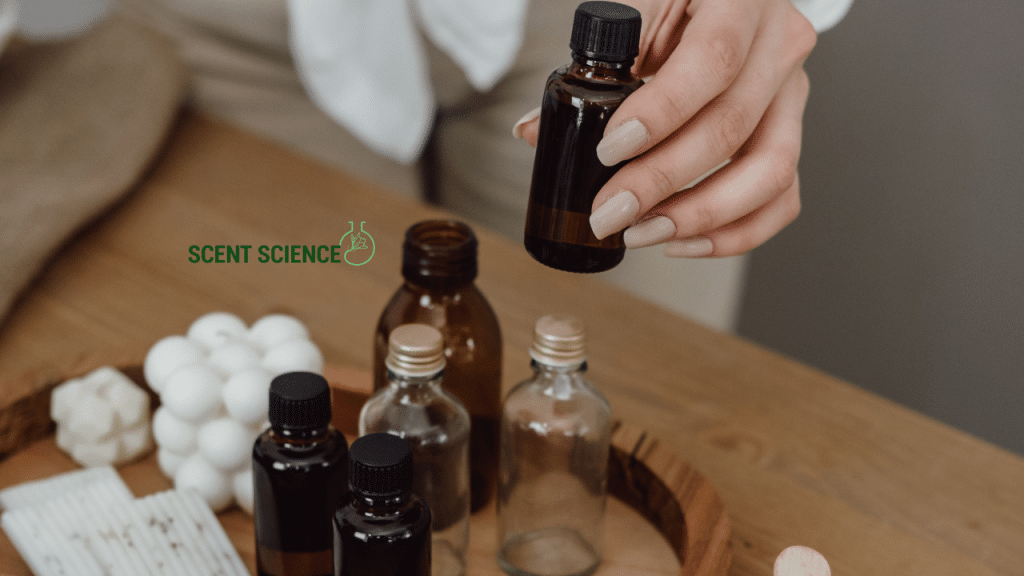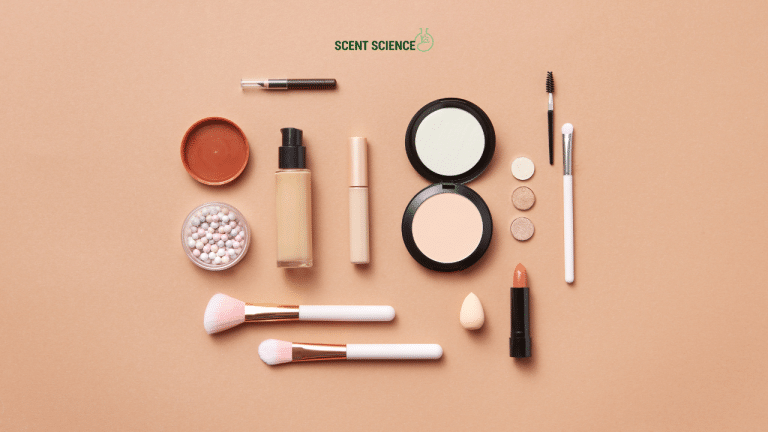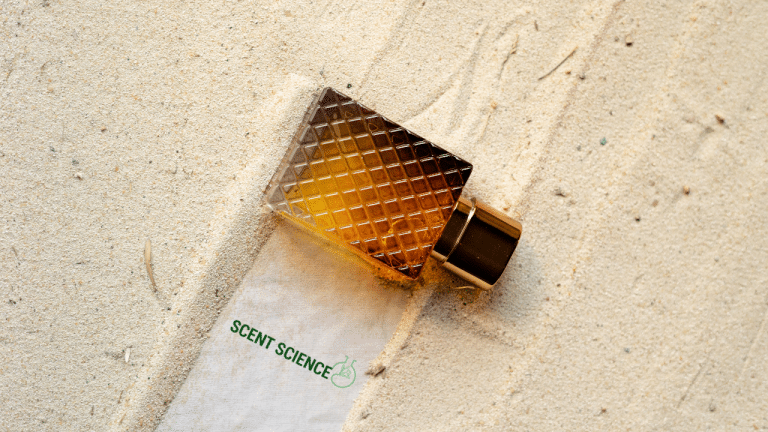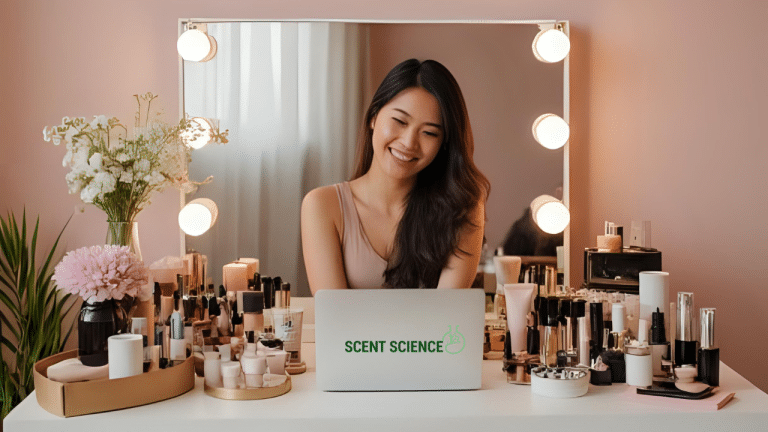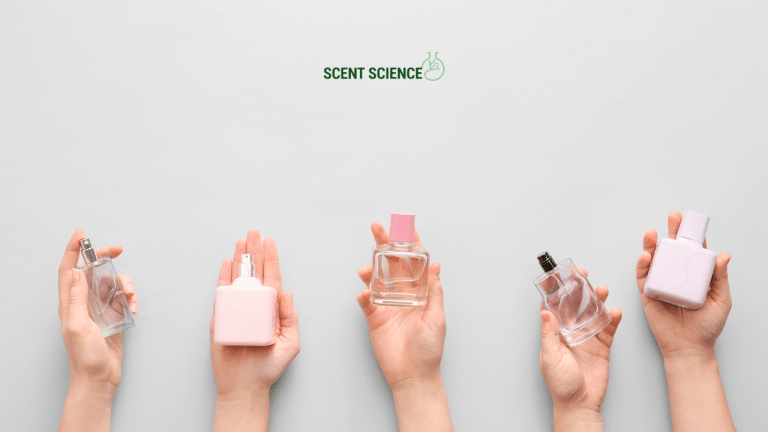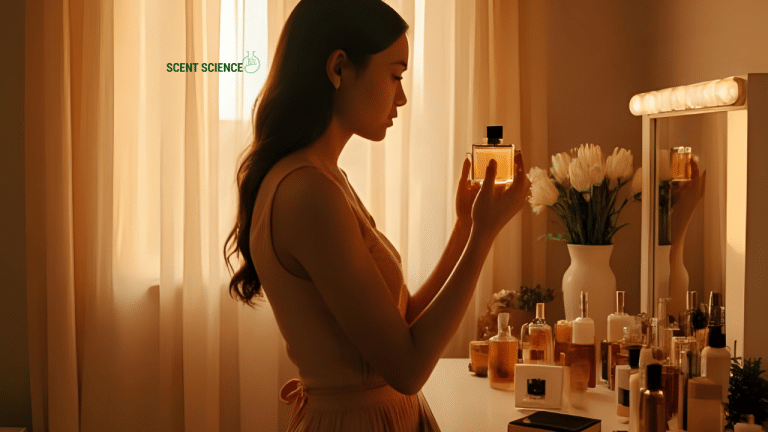The fragrance industry, once reliant on centuries-old craftsmanship, is undergoing a seismic shift thanks to artificial intelligence (AI). From accelerating scent formulation to enabling hyper-personalized perfumes, AI is redefining how fragrances are created, tested, and enjoyed. Here’s how technology is transforming the art of perfumery:
Table of Contents
Toggle1. AI as a Creative Partner in Scent Formulation
AI is not replacing perfumers-it’s empowering them. By analyzing vast datasets of existing formulas, consumer preferences, and market trends, AI tools like IBM’s Philyra and OGDiffusion (developed by the Institute of Science Tokyo) generate novel scent combinations humans might overlook.
- Philyra, used by Symrise, scans 3.5 million formulas and sales data to identify “white spaces”-untapped olfactory combinations. For example, it created Egeo ON Me and Egeo ON You, AI-generated fragrances blending caramel, condensed milk, and tropical fruits for Brazil’s O Boticário.
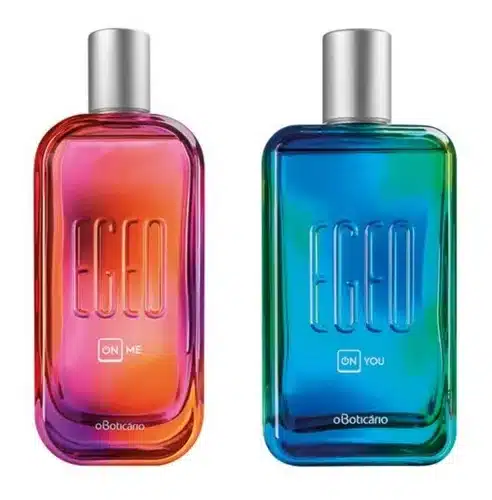
- OGDiffusion uses mass spectrometry data from essential oils to automate fragrance creation. It maps scent descriptors (e.g., “citrus” or “woody”) to chemical profiles, enabling even novices to design blends. Human trials confirmed its accuracy, with volunteers reliably matching AI scents to their intended descriptors.
These tools reduce trial-and-error phases, cutting development time from years to days.
2. Hyper-Personalization: Scents Tailored to You
AI is making bespoke fragrances accessible. Brands like Every Human and Tom Ford use algorithms to analyze individual preferences, moods, and even body chemistry, crafting perfumes that feel uniquely personal.
- Data-Driven Customization: AI processes inputs like purchase history, skin pH, and emotional goals to suggest notes. For instance, a stress-relief fragrance might combine lavender and bergamot, while a confidence-boosting blend could feature bold spices.
- Mood Mapping: By linking scent molecules to emotional responses (e.g., citrus for energy, sandalwood for calm), AI creates fragrances that align with the wearer’s mental state.
3. Sustainability Through Biotechnology
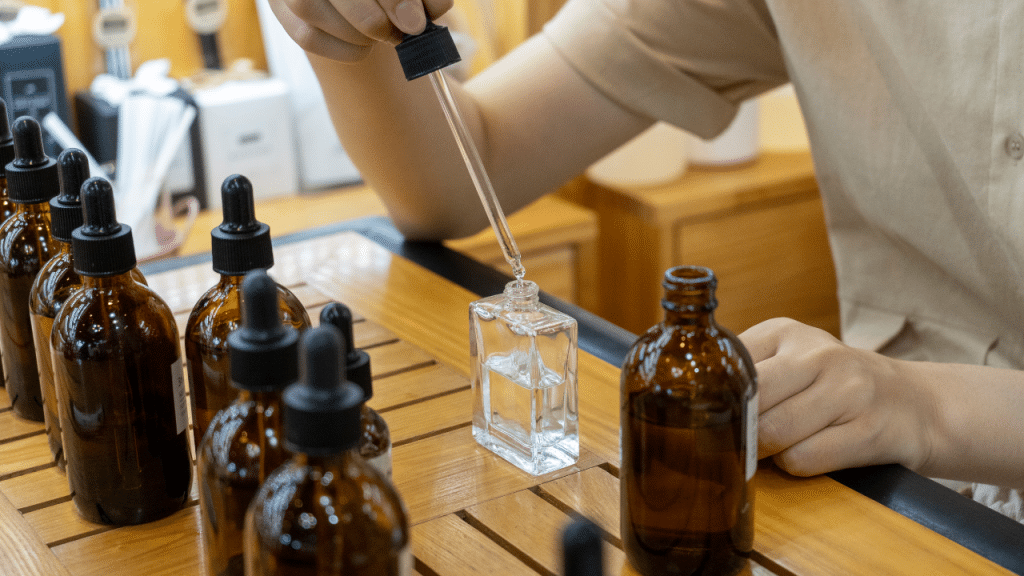
AI is driving eco-friendly innovation by reducing reliance on endangered botanicals and harmful synthetics.
- Lab-Grown Scents: Companies like DSM-Firmenich use AI to design molecules like Clearwood (a sustainable patchouli alternative) and Dreamwood (biotech sandalwood). These mimic rare aromas without deforestation or overharvesting.
- Circular Practices: AI optimizes formulas to use upcycled ingredients, such as citrus peels or rice husks, minimizing waste.
4. Enhancing Efficiency and Creativity
AI handles repetitive tasks, freeing perfumers to focus on artistry:
- Givaudan’s CARTO: A drag-and-drop interface lets perfumers experiment with 1,500+ ingredients digitally. A robot blends physical samples instantly, speeding up iteration.
- Trend Prediction: AI analyzes social media, reviews, and sales data to forecast emerging preferences (e.g., the rise of savory notes like soy sauce or green tea).
5. Ethical Considerations and Challenges
While AI unlocks innovation, it raises questions:
- Data Privacy: Personalization requires sensitive user data, demanding robust security measures.
- Bias and Originality: AI trained on historical data may replicate past trends rather than innovate. Brands must balance algorithm suggestions with human intuition.
- Environmental Impact: Lab-grown ingredients need ethical sourcing and energy-efficient production.
The Future of AI in Fragrance
- Scented Digital Content: AI could design aromas for virtual reality, gaming, or streaming platforms.
- Consumer-Created Scents: Platforms may let users describe a scent in words (e.g., “a rainy forest at dawn”) and receive a custom formula.
- Global Collaboration: AI bridges cultural gaps, suggesting region-specific blends-think zesty citruses for Mediterranean markets or smoky oud for the Middle East.

Conclusion: A Harmonious Blend of Art and Science
AI is not a threat to perfumers but a transformative tool. By handling data analysis, sustainability challenges, and personalization, it allows artists to focus on emotion, storytelling, and sensory magic. As Claire Viola of Symrise notes, “It’s a man-machine collaboration… freeing perfumers from boring tasks so they can innovate.”
The future of fragrance lies in this synergy-where technology amplifies creativity, and every scent tells a story shaped by both algorithms and human heart.
Explore AI-crafted fragrances and the future of scent at scentsciencebeauty.com and follow us on social media!

